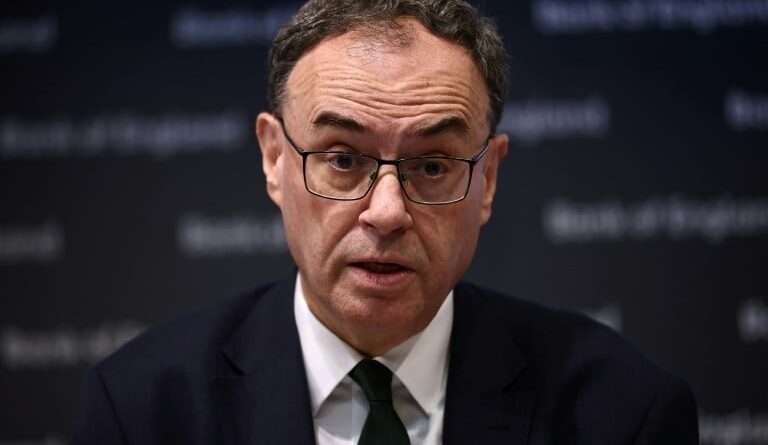Bank of England Cuts Interest Rates Amid Three-Year Low in UK Inflation
|
Getting your Trinity Audio player ready...
|
The Bank of England (BoE) has made a significant move to lower its interest rates, as inflation in the UK hits its lowest level in three years. On Thursday, the BoE announced that it would reduce its key borrowing rate by 25 basis points to 4.75%, marking its second rate cut since August. This decision comes amid a series of economic shifts in both the UK and global markets, with inflationary pressures easing following the pandemic and geopolitical events.
Inflation Drops to a Three-Year Low
UK Inflation Reaches 1.7%
The key driver behind this interest rate reduction is the decline in UK inflation, which recently fell to 1.7%, the lowest rate observed in the UK since 2021. This drop is significant as it brings inflation well below the Bank of England’s target of 2%, signaling a shift in the economic landscape. The fall in inflation is particularly noteworthy considering the high levels of inflation seen in recent years due to post-pandemic recovery and geopolitical tensions, such as Russia’s invasion of Ukraine.
The Consumer Prices Index (CPI), which measures the inflation rate, has steadily decreased over the past few months, providing the BoE with the flexibility to make adjustments to its monetary policy. The BoE’s move to lower rates aligns with broader efforts to stimulate the economy and maintain stability in inflation levels, especially as the UK economy faces various challenges.
BoE’s Inflation Targeting Approach
Governor Andrew Bailey of the Bank of England emphasized the central bank’s cautious approach to rate cuts. He noted that while the Bank of England is able to reduce borrowing costs in response to the easing of inflation, it is essential to strike a balance to ensure that inflation does not return to problematic levels in the future. Bailey stated, “We need to make sure inflation stays close to target, so we can’t cut interest rates too quickly or by too much.”
This statement reflects the BoE’s strategic planning in navigating the fine line between economic growth and inflation control. While lowering interest rates can stimulate borrowing and investment, the BoE must avoid triggering inflationary pressures again by acting too aggressively.
The Decision to Lower Interest Rates
The Impact of the Interest Rate Cut
The decision to cut interest rates by 25 basis points to 4.75% is part of the BoE’s ongoing effort to support the UK economy, which is still recovering from the aftereffects of the COVID-19 pandemic and the ongoing impact of Russia’s invasion of Ukraine. By lowering the borrowing costs, the BoE is hoping to encourage lending, investment, and consumer spending, all of which are essential for sustaining economic recovery.
This rate cut is significant, as it follows an earlier reduction in August, where the BoE lowered its key rate for the first time since early 2020. At that time, the Bank reduced the rate from 5.25% to 5.00% after inflation in the UK returned to more manageable levels.
Despite these reductions, Bailey warned against the idea of rapid or excessive rate cuts. “If the economy evolves as we expect, it’s likely that interest rates will continue to fall gradually from here,” he said, underlining the BoE’s cautious stance on monetary policy.
The Context of Global Monetary Policy
The BoE’s decision aligns with the broader trend among central banks worldwide to adjust their monetary policies after several years of rising interest rates to tackle soaring inflation. Central banks, including the US Federal Reserve and Sweden’s central bank, have been reducing borrowing costs to ease the pressure on consumers and businesses. Sweden, in particular, slashed its rates by 0.5 basis points, marking its fourth rate cut of the year, the most significant reduction in over a decade.
As major central banks like the BoE and the US Federal Reserve reduce their interest rates, it is an indication of a global trend to recalibrate policies after a period of heightened inflation. This pattern suggests that economies worldwide are now entering a phase of stabilization, with policymakers keen to support recovery while maintaining manageable levels of inflation.
The Economic Outlook for the UK
UK’s Economic Recovery
The UK economy has faced significant turbulence over the past few years. From the COVID-19 pandemic to the Brexit transition and geopolitical disruptions, it has been a challenging period for the nation’s economy. The recent interest rate cuts by the Bank of England reflect an optimistic but measured outlook on recovery. With inflation now under control, the BoE is betting that the economy will continue to stabilize, allowing for a gradual reduction in borrowing costs.
However, economic growth remains uneven. Despite a fall in inflation, other challenges persist, including the global energy crisis and ongoing disruptions in global supply chains. The Labour government’s recent budget, which included tax increases and higher borrowing to address public spending, highlights the ongoing fiscal challenges the UK government faces.
BoE’s Strategy: A Gradual Approach
The BoE’s monetary policy approach will likely continue to follow a gradual path. While the recent interest rate cuts are aimed at supporting the UK economy, Governor Andrew Bailey emphasized that the bank’s goal is to avoid excessive rate cuts that could fuel inflation once again. The BoE’s focus will remain on maintaining price stability and promoting sustainable growth.
The UK’s current inflation rate of 1.7% is a positive sign that the Bank of England’s policy measures are having the desired effect. However, Bailey warned that maintaining this low inflation rate would require careful monitoring of economic indicators and a flexible approach to monetary policy adjustments.
Global Central Banks Follow Similar Trends
The US Federal Reserve’s Upcoming Rate Cut
The BoE’s rate cut also comes in the context of other global monetary policy shifts. The US Federal Reserve is expected to cut interest rates later today by 25 basis points, following similar moves by other major central banks. Analysts predict that the Fed’s decision will have minimal impact on its policy stance despite the return of Donald Trump to power, with most observers agreeing that the Fed’s decision will be driven primarily by economic factors.
Sweden and Norway’s Rate Adjustments
In Europe, Sweden’s central bank has been among the most aggressive in its rate cuts, slashing its borrowing costs by 0.5 basis points. This marks its fourth rate reduction this year, signaling a proactive approach to economic recovery. Conversely, Norway’s central bank decided to hold rates steady, reflecting a more cautious approach in its handling of inflationary pressures.
MUST READ:
Conclusion
The Bank of England’s decision to cut interest rates by 25 basis points is a clear indication of the ongoing adjustment in UK monetary policy as inflation slows. While the decision is welcome news for borrowers and businesses, the BoE has emphasized the need for a gradual approach to further rate reductions. As inflation stabilizes and the global economy begins to recover, the BoE will likely continue to make measured decisions to support economic growth while preventing inflation from rising once again.
FAQs
1. Why did the Bank of England cut interest rates?
The Bank of England reduced interest rates to 4.75% after UK inflation fell to a three-year low of 1.7%, below the BoE’s target of 2%. This rate cut aims to support the economy while keeping inflation under control.
2. What is the current inflation rate in the UK?
The UK inflation rate currently stands at 1.7%, which is the lowest level in three years and well below the Bank of England’s target of 2%.
3. How much did the Bank of England reduce interest rates by?
The Bank of England reduced interest rates by 25 basis points, bringing the key borrowing rate to 4.75%.
4. Will the Bank of England cut rates again?
The Bank of England has indicated that it is likely to continue gradually lowering interest rates if the economy evolves as expected. However, rate cuts will not be too rapid to avoid fueling inflation.
5. How does this rate cut affect borrowers?
The rate cut will lower borrowing costs, which could make loans, mortgages, and credit more affordable for consumers and businesses in the UK.




